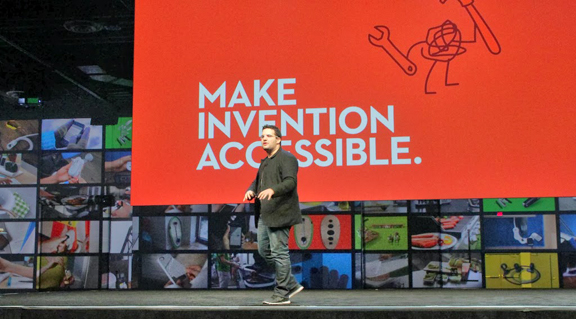December 16, 2013
In her book U.S. Army War College: Military Education in A Democracy (Temple University Press, 2002), Judith Hicks Steihm discussed an acronym the War College invented to describe the volatile, uncertain, complex, and ambiguous climate of the modern era: VUCA. Last week, at Autodesk University conference, Autodesk CTO Jeff Kowalski saw fit to recycle the term to capture the mood of the times.
“We live in the age of VUCA,” he declared. To some, it might sound like an ominous warning; to others it carries hints of new opportunities in unexpected corners.
Among the keynote speakers was Ben Kaufman, CEO of Quirky.com. Providing individual inventors with a space to pitch, fund, and produce their ideas, Quirky is more than a web portal. It is arguably the engine for innovation, available to the little guys that might otherwise never get the chance to invent. One of its success stories is Pivot Power, a curvy extension cord invented by Jake Zien from Rhode Island School of Design. Zien submitted the concept to Quirky, but the user community helped evolve the design throughout the development cycle.
In the topsy-turvy world of VUCA, the designs developed to function in the third world’s resource-strapped environment sometimes find their ways back into the developed world’s commerce. Kowalski said, “Reverse Innovation is when we design something for the developing world when facing constraints, e.g. limited resources, durability, etc., and then find that it becomes popular in the developed world.”
There’s also another type of reversal. The Quirky-style innovation and manufacturing, first developed to cater to the under-served makers and tinkerers, is now edging its way back into the corporate world that once scoffed and dismissed it. Quirky’s latest partner happens to be GE. The electric giant is infusing $30 million into Quirky’s coffer. This handshake between the people-powered invention portal and the household appliance titan is expected to produce new smart devices, from egg cartons that can track the freshness of the content to custom RSS feed dashboard that displays weather, twitter, and stock.
Large manufacturers who once operated in secrecy and relied on in-house talents are quickly discovering that they stand to benefit from reaching out beyond the firewalls, beyond their own intranet, for good ideas. Kowalski said, “No matter who you are, most of the smartest people work for someone else.”
Case in point: When Proctor & Gamble had the bright idea to print trivia questions on its Pringles potato chips, their own scientists were stumped. They didn’t have a way to print on potato chips. The company discovered the technology it needed in a bakery in Bologna, Italy, run by a university professor.
All these point to the need for a more flexible breed of design tools, affordable, available on demand, and often hosted in the cloud. Autodesk has championed cloud-hosted design and data management software products with its Autodesk 360 brand. But it now plans to offer software rental, available in monthly, quarterly, and annual plans.
“Now that you can rent Autodesk software, the ownership model has finally caught up to the agility of the product itself,” Kowalski observed.
More than a decade ago, Autodesk and its rivals relied heavily on value-added resellers (VARs) to sell and service their solutions. But the emergence of SaaS and rental software may reshape the role of VARs in the future. Resellers like RAND Worldwide—one of the largest design software resellers to enterprises—are caught in the middle of the VUCA era.
Scott Hale, manager for manufacturing solutions, IMAGINiT, a division of RAND, observed, “I don’t know if I have seen the desktop engineering aspects [design and simulation in CAD and CAE software] moving to the cloud. I think people are interested in exploring. But I absolutely see the cloud playing a role in collaboration as more and more engineering groups start to be dispersed ... The cloud is great for managing collaboration, the product lifecycle, and approvals.”
VARs used to offer training services for customers who need to master the desktop design software programs. “Now, we offer consultation, customization around Autodesk cloud solutions, and process improvement,” explained Hale.
Survival in the age of VUCA may largely depends on nimbleness. Individual inventors and their crowd-funded projects are adding new energy to the manufacturing commerce once dominated by Ford, GM, Boeing, Airbus, and the likes.
The new breed of unlikely designers—homemakers with practical solutions or high-school dropouts with good ideas—grew up with browser-based social media and are more prepared to embrace the cloud than the previous generation. They have been trained in Apple’s app store to expect software to work instantly, without the need to spend days to install or months to master it. Their projects are by nature short, exploratory, and diverse—something an all-encompassing software package cannot possibly address. Only purpose-built modules will do. For the children of VUCA, the pay-as-you-go, cancel-anytime option is not optional. It’s essential.
Subscribe to our FREE magazine, FREE email newsletters or both!
About the Author
Kenneth Wong is Digital Engineering’s resident blogger and senior editor. Email him at [email protected] or share your thoughts on this article at digitaleng.news/facebook.
Follow DE







